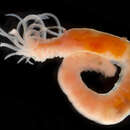Identification Resources
provided by EOL authors
Diagnostic characters of the genus are given in the following resources. Fauchald, 1977: p. 131. Hutchings & Glasby, 1988: p. 15. Resource includes a key to the Australian species of Lanassa.
Lanassa (annelid): Brief Summary
provided by wikipedia EN
Lanassa is a genus of annelids belonging to the family Terebellidae.
The genus has almost cosmopolitan distribution.
Species:
Lanassa benthaliana McIntosh, 1885
Lanassa capensis Day, 1955
Lanassa exelysis Hutchings & Glasby, 1988
Lanassa gracilis (Moore, 1923)
Lanassa nordenskioeldi Malmgren, 1866
Lanassa nordenskioldi Malmgren, 1866
Lanassa ocellata Hutchings & Glasby, 1988
Lanassa praecox (Saint-Joseph, 1899)
Lanassa sarsi McIntosh, 1885
Lanassa venusta (Malm, 1874)
- license
- cc-by-sa-3.0
- copyright
- Wikipedia authors and editors
Classification
provided by World Register of Marine Species
Lanassa was included in tribe Terebellini by Stiller et al (2020). Previously Holthe (1986) had placed it in tribe Amphitritini. At the time its parent subfamily was Amphitritinae, the name incorrectly used for what is now Terebellinae.
7. Grant, P.R. and Grant, B.R. (2006) Evolution of character displacement in Darwin's Finches.
Science,
313: 224 - 226.
- license
- cc-by-4.0
- copyright
- WoRMS Editorial Board
Diagnosis
provided by World Register of Marine Species
Branchiae absent. Lateral lobes sometimes present; glandular pads well developed. Thoracic notopodia begin on segment 4 and continue for 15 segments. Notosetae serrated capillaries. Neuropodia from segment 5 (setiger 2), with avicular uncini arranged in double rows on some segments.

